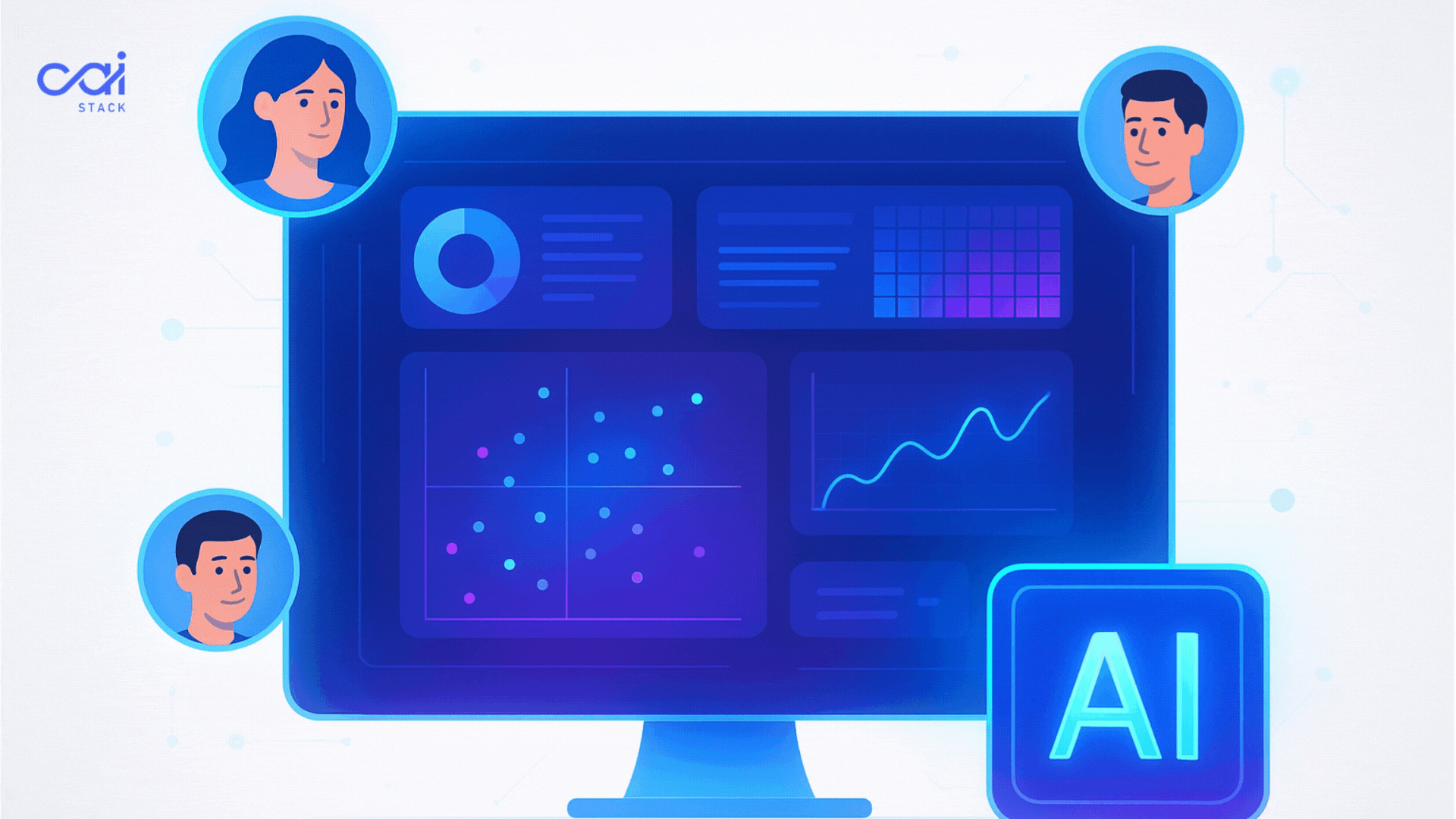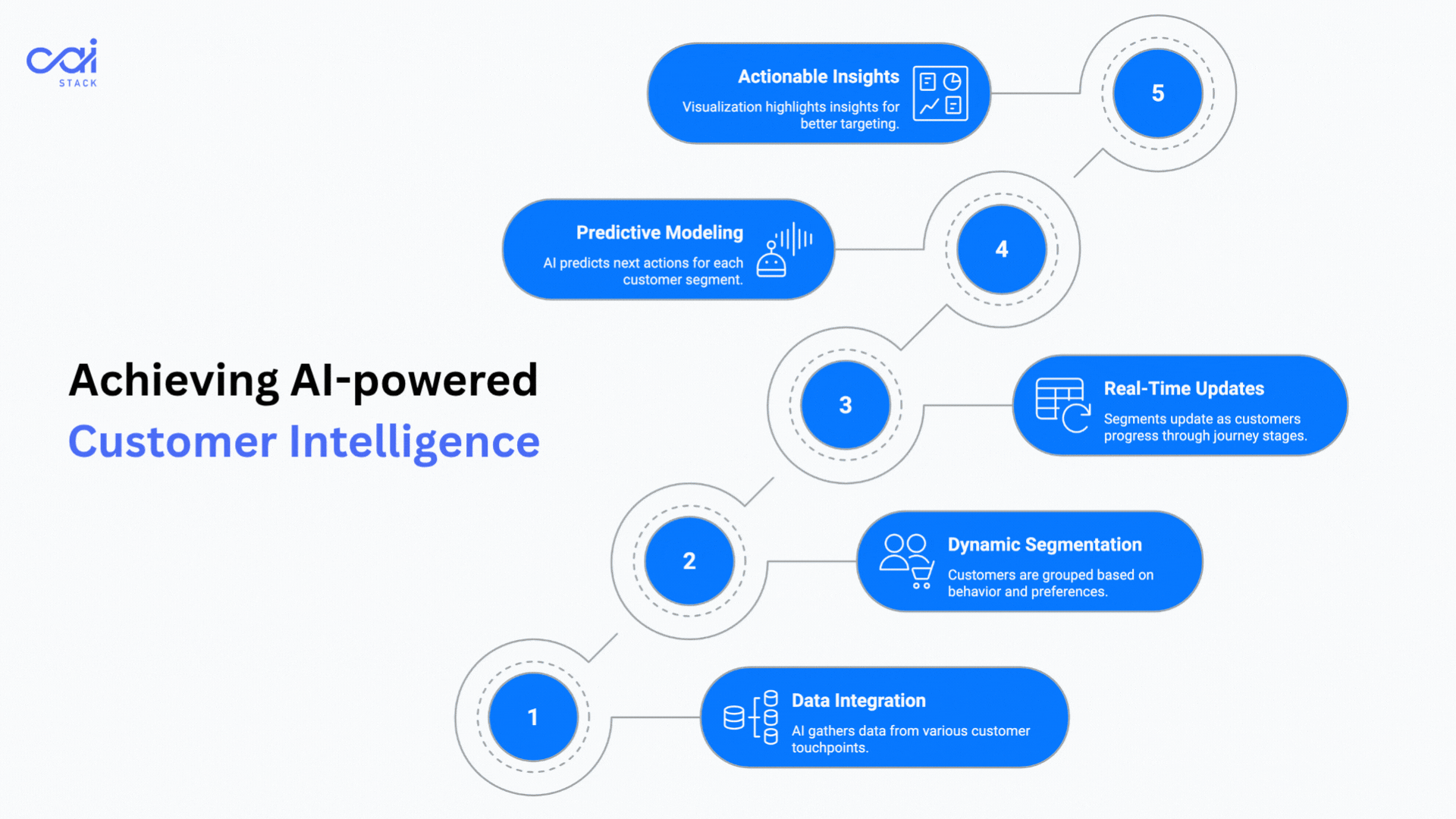Are you still grouping your banking customers by account size and product holdings?

If yes, you're missing opportunities.
The old way of dividing your audience into static buckets doesn't work anymore. Your customers move fast. A client researching mortgages today might be ready for wealth management tomorrow. Their needs shift. Their behavior changes weekly, sometimes daily.
That's where dynamic customer segmentation comes in. It uses real-time data and AI targeting to create groups that actually reflect what your customers are doing right now, not what they did six months ago.
Let's explore the blog further to know how it works.
Traditional segmentation puts customers into fixed groups based on their profile at a specific point. A retail banking customer stays in that bucket. A high-net-worth client stays in their. Once segmented, they stay there until someone manually updates them.
Dynamic segmentation automatically moves customers between groups based on their real-time behavior and actions.
Today, 65% of U.S. banking customers prefer to complete any financial task through a mobile app - so segmentation must respond to mobile behavior.
This pattern shows up constantly across financial institutions.
A bank builds perfect segments in January. By March, those segments are outdated. By June, they're useless.
Why? Because customer needs don't sit still.
Your customer who was "exploring investment options" three months ago might be ready to move substantial assets today. But if your system still sees them as "early stage," you're sending educational content when they need a portfolio manager.
Here's what happens with static customer segmentation in financial services:
At Bank of America, clients logged in 14.3 billion times last year, a 16% increase, underscoring how much more active users are becoming.
AI targeting changes the game completely for financial institutions.
Instead of manually updating segments every quarter, AI does it automatically. Every interaction. Every click. Every signal.
Here's what Customer Intelligence picks up in financial services:
The system watches all of this. In 2024 alone, clients received nearly 12 billion AI-driven digital alerts - up 11 % year over year. showing how banks are pushing to stay in sync with customer behavior
Before you can segment dynamically, you need complete customer data.
That's where 360-degree customer insights come in.
Most financial institutions have customer data scattered everywhere. None of these systems talks to the others.
When you have a complete picture, your segments become accurate. This unified view feeds directly into your segmentation logic. The more complete your data, the better your segments perform.
A full 66 % of customers demand seamless omni-channel experiences, and 87 % say consistency matters more than flashy features - so your segments must reflect their full journey
Forget account balances. Forget tenure.
What matters is behavior.
Behavioral segmentation groups people based on their actual actions. Not their account type. Not their asset size. What they do.
These signals tell you what someone needs right now. Targeting loyal customer segments increased conversion by up to 30 % in the banking use case
Here's where customer segmentation gets interesting for financial institutions.
Traditional segmentation tells you what happened. Predictive targeting tells you what's likely to happen next.
The AI figures out patterns across thousands of customer interactions. It learns which behaviors predict specific outcomes.

See how AI-powered Customer Intelligence can change your segmentation approach? CAI Stack helps financial institutions build segments that update in real-time based on actual customer behavior. The system combines 360-degree insights with predictive targeting to keep your segments accurate and actionable.
Dynamic customer segmentation gives you three things that directly impact your bottom line:
Your team stops wasting time on customers who aren't ready. You focus resources where they'll actually drive revenue. The marketing budget has been added. Sales cycles get shorter.
Every action your team takes is based on real behavioral data, not guesses. That means higher productivity across the board.
You know exactly who needs what financial product at what time. No more generic product promotions and mass email campaigns.
Every interaction is relevant because it's based on actual behavior, not assumptions. When you combine 360-degree insights with behavioral segmentation and predictive targeting, you get precision at scale.
You can forecast the pipeline more accurately because you see patterns early. You spot churn risks before customers leave.
The AI learns from every interaction, making your predictions more accurate over time. That means more reliable revenue forecasting and better resource planning.
A regional commercial bank applies AI-driven customer segmentation using transaction and behavioral data to personalize product offers.
Instead of promoting the same loan product to all customers, the bank analyzed spending patterns, demographics, and payment histories to identify segments most likely to respond to specific financial offers.
According to an old Accenture report, integrating AI into banking operations could lift profits by an average 38 % by 2035 - making smart segmentation a strategic investment.
You don't need to rebuild your entire banking platform tomorrow.
Start with one segment. Pick your highest-value audience. Maybe mortgage-ready customers. Build dynamic rules around their behavior. Connect it to one campaign.
Test it. Measure it. Prove it works.
Then expand to investment prospects. Then, business banking opportunities. Then, credit card upgrades.
That's how you build customer segmentation that actually drives results. One segment at a time. Each one is based on real data. Each one drives specific outcomes.
Ready to see how your segmentation strategy can improve? Book a free demo today at CAI Stack!
Subscribe to get the latest updates and trends in AI, automation, and intelligent solutions — directly in your inbox.
Explore our latest blogs for insightful and latest AI trends, industry insights and expert opinions.
Empower your AI journey with our expert consultants, tailored strategies, and innovative solutions.